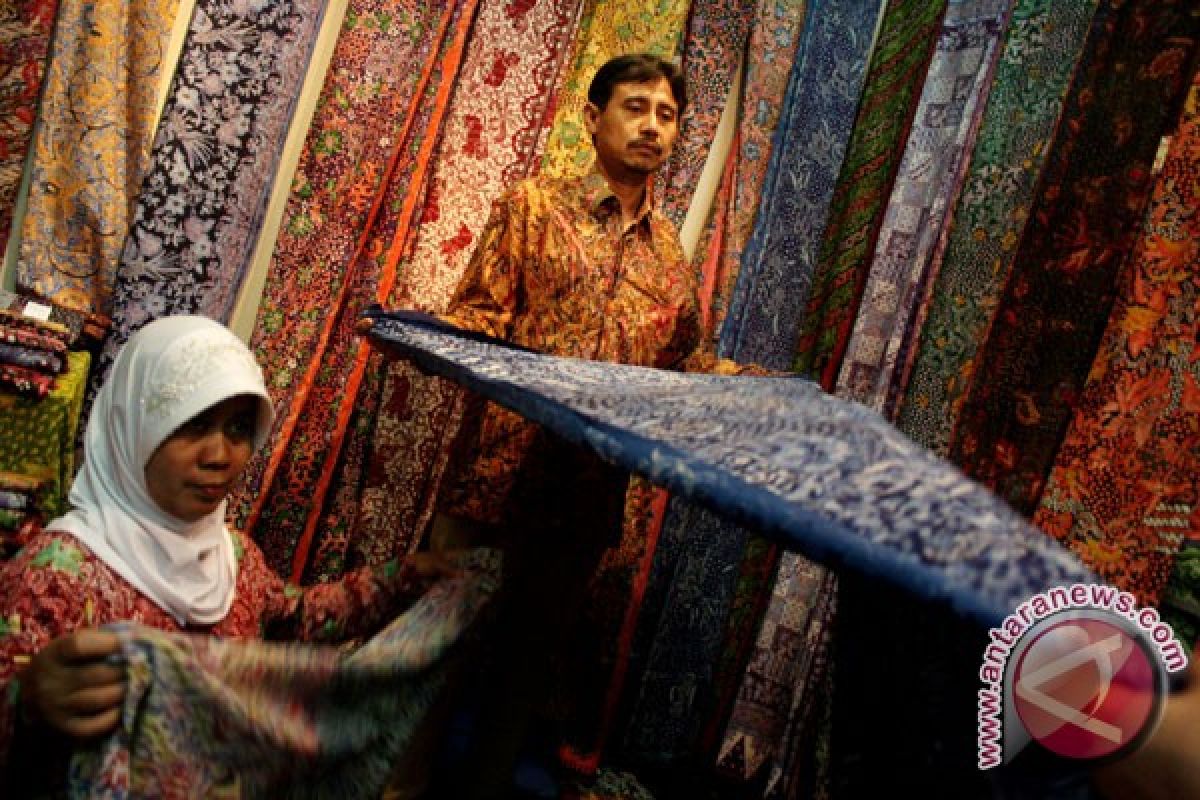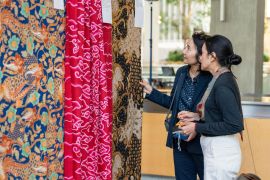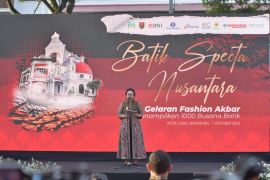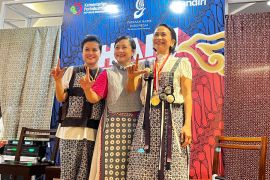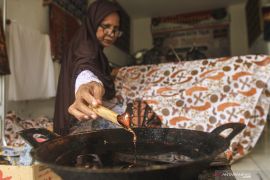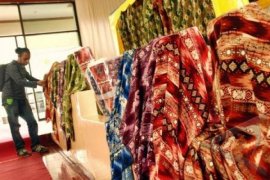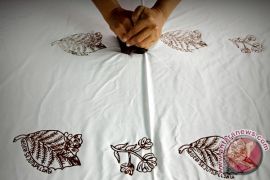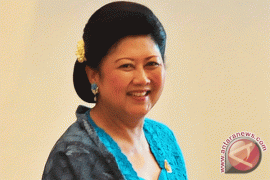"The problem is how to market our product."Jakarta (ANTARA News) - Working to raise production to almost any level is not a problem for Indonesia`s over 50,000 small scale batik enterprises but they still face difficulties in marketing their products.
They ask the government to help overcome their weaknesses in marketing. The expectation was voiced by several batik producers who are taking part in a batik exposition during the current World Batik Summit 2011 in Jakarta on Wednesday.
"Regarding production, no matter how much, batik makers can deliver. But the problem is how to market our product," Eko (34), a small-scale batik producer who joined the expo said.
Eko said marketing is the main problem so that he hoped that the world batik expo would help popularize the various types of Indonesian batik and to promote them to the world consumers.
Therefore, a number of batik makers exhibiting their products at the current World Batik Summit 2011 expressed hope that the government would routinely organize national and international batik expos.
"The government is expected to help promote batik products by holding exhibitions routinely. Thus, batik will become more popular," Farisi, 56, a batik maker from Pekalongan, Central Java, said.
Farisi said that so far batik producers had been facing constraints in marketing their products due to lack of customers. More exhibitions were only held in Pekalongan.
"We admit that we are still weak in marketing. Most of our buyers are tourists who happen to visit Pekalongan," he added.
He said that small batik producers could actually organize exhibitions of their own but they hoped they would not be charged for accommodation and transportation costs.
"The greater number of small and medium scale batik producers that could survive the bigger number of workers that could be employed," he said.
He said that the production of a piece of cloth alone could involve more than ten workers for the work of dyeing, pattern making to staining.
He said that exhibitions would bring batik close to the people, so that hopefully it would boost batik sales.
Therefore, the Batik World Summit 2011 is being held in Jakarta to discuss problems relating to the development, promotion and preservation of batik.
On the occasion, Trade Minister Mari Elka Pengestu presented a blueprint for the preservation and development of Indonesian `batik` to President Susilo Bambang Yudhoyono.
"In the blueprint, the government outlines efforts to increase batik`s competitive edges at home and overseas," Mari Elka Pangestu said.
She said the blueprint outlined efforts to preserve and develop Indonesian batik as a product representing the country`s national identity and pride. It is expected to serve as a basis for working out short, medium and long term policies.
Mari said that in the short term a number of quick win programs would be carried out such as improving the batik standardization, composing batik communication strategies as a cultural heritage and as a driver of the economy, improving the batik kraton`s motives and taking stocks of batik books.
Other quick win programs, she said, included popularization and promotion through the media, deciding batik producer regions as pilot projects which were environment friendly and were to be developed into a tourism destination and a creative region and conducting international scale activities.
Based on the blueprint, there are about 55,000 batik making entities in Indonesia of which 99 percent are small scale businesses. In 2010 alone, Batik industry provided jobs for 916,783 with a production value of Rp3.9 trillion.
In the meantime, state-owned bank BNI is providing assistance for the development of small scale batik businesses.
BNI is developing a number of "BNI Batik Kampoengs" where batik development centers are being developed and empowered with a partnership program, a financing facility, a capacity building and a market access support.
The programs are being developed in a number of regions like Pekalongan, Pati, Solo, Yogyakarta, Cirebon and other regions.
BNI President Director Gatot M Suwondo said that most batik businesses in Indonesia were small and medium scale enterprises which had been given attention by BNI in developing their business since they were still micro-business scale through a partnership program.
He said that Batik was also a product which contributed to Indonesia`s exports because consumers in the world increasingly liked this product.
Indonesian batik exports in 2008 reached a total value of 93.09 million US dollars.
However, in 2009, the figure dropped to 76.01 million US dollars, and in 2010 it fell further to 69.24 million US dollars due to global crisis. It was among others exported to the United States, Belgium and Japan
In previous years, namely in the 2006- 2010 period, market demand increased by 59 percent.
Indonesia`s batik exports in 2011 experienced lower growth compared with previous years as a consequence of the global financial crisis.
Minister Mari Elka Pengestu said batik exports in 2011 declined because the commodity`s main markets were in countries going through a financial crisis, namely the United States and Europe as well as Japan, the minister said.
(T.A014/HAJM/S012)
Reporter: by Andi Abdussalam
Editor: Priyambodo RH
Copyright © ANTARA 2011
